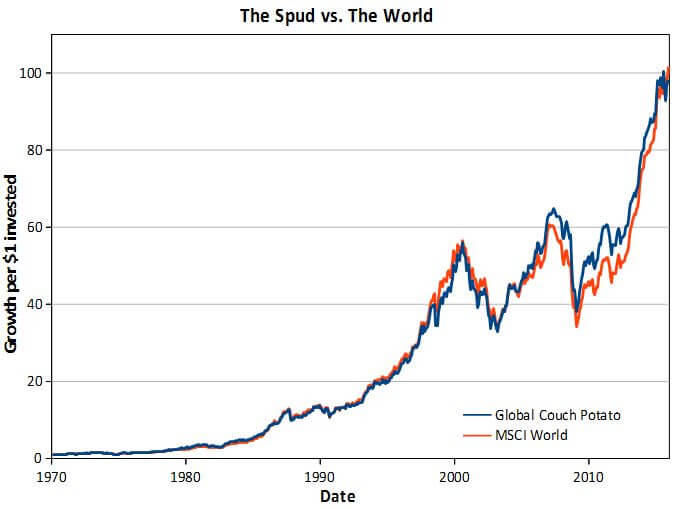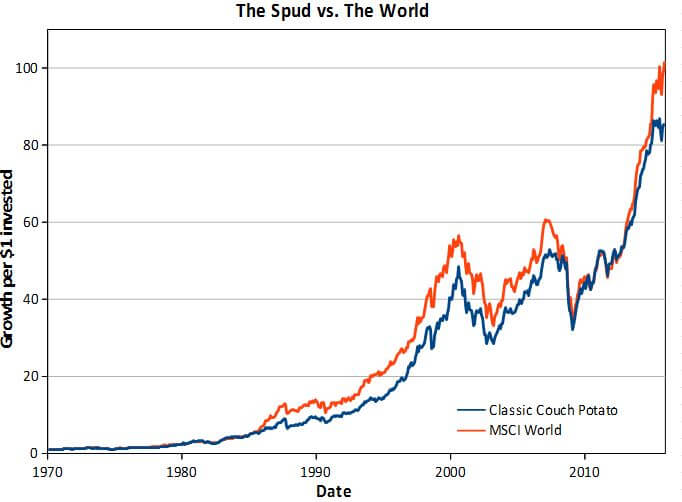Don’t sweat the small asset allocation details
Two very opposing equity allocations haven't affected returns much over the decades
Advertisement
Two very opposing equity allocations haven't affected returns much over the decades
 The situation changes more noticeably if you look at the classic couch potato portfolio, which eliminates international stocks entirely. The graph below shows how it fares against the world index.
The situation changes more noticeably if you look at the classic couch potato portfolio, which eliminates international stocks entirely. The graph below shows how it fares against the world index.
 But even in this extreme instance, the returns between the two haven’t been too far off. For instance, in the early part of this decade the classic couch potato was basically running neck and neck with the world index.
I prefer the global variant of the global couch potato, which is more diversified than the classic version. But, based on past history, you probably shouldn’t worry too much if you have, say, an extra 5% devoted to Canadian stocks and proportionately less in U.S. and international stocks.
But even in this extreme instance, the returns between the two haven’t been too far off. For instance, in the early part of this decade the classic couch potato was basically running neck and neck with the world index.
I prefer the global variant of the global couch potato, which is more diversified than the classic version. But, based on past history, you probably shouldn’t worry too much if you have, say, an extra 5% devoted to Canadian stocks and proportionately less in U.S. and international stocks.
| Name | Price | P/B | P/E | Earnings Yield | Dividend Yield |
|---|---|---|---|---|---|
| National Bank (NA) | $42.68 | 1.54 | 10.49 | 9.54% | 5.06% |
| CIBC (CM) | $96.87 | 1.84 | 10.72 | 9.33% | 4.87% |
| Shaw (SJR.B) | $25.01 | 2.27 | 14.21 | 7.04% | 4.74% |
| Bank of Nova Scotia (BNS) | $62.48 | 1.48 | 10.79 | 9.27% | 4.61% |
| BCE (BCE) | $59.85 | 3.98 | 20.08 | 4.98% | 4.56% |
| Royal Bank (RY) | $74.76 | 1.76 | 11.21 | 8.92% | 4.33% |
| Bank of Montreal (BMO) | $78.67 | 1.32 | 11.71 | 8.54% | 4.27% |
| Power (POW) | $29.73 | 1.05 | 7.71 | 12.97% | 4.19% |
| TELUS (T) | $42.07 | 3.26 | 18.37 | 5.44% | 4.18% |
| Manulife (MFC) | $17.99 | 0.92 | 16.97 | 5.89% | 4.11% |
Share this article Share on Facebook Share on Twitter Share on Linkedin Share on Reddit Share on Email